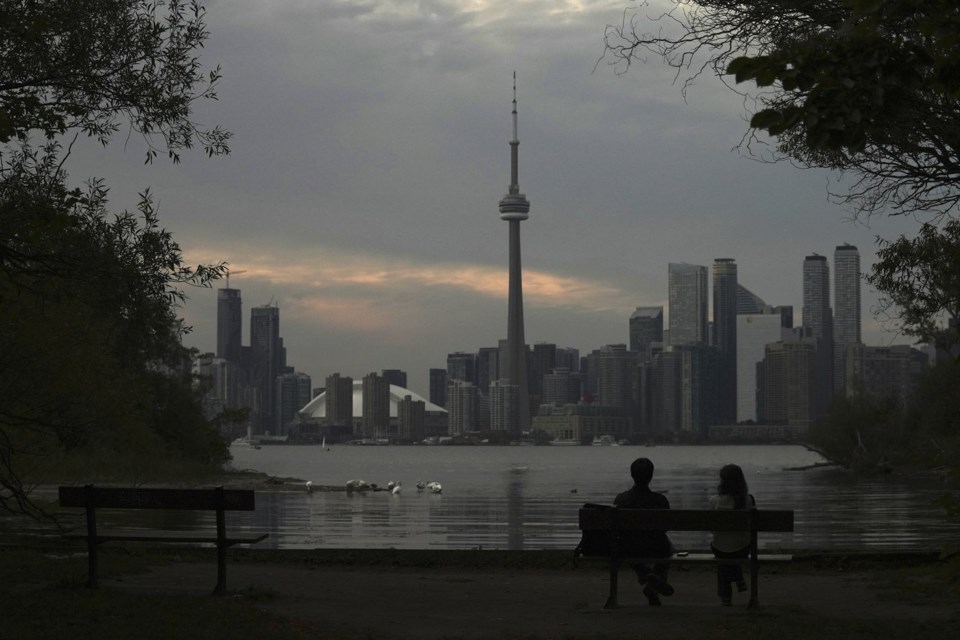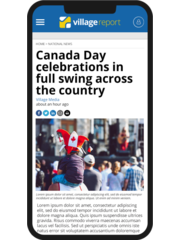TORONTO — The few square kilometres of Toronto-St. Paul’s are home to several new-build condominiums, trendy bistros, high-end hair salons and gated houses with manicured lawns.
The area is also the site of a food bank that has seen record attendance since the COVID-19 pandemic, several tenant advocacy organizations and a long-delayed Eglinton LRT project in its north end.
The provincial riding of more than 116,000 residents is representative of the city’s diversity at a cultural, economic and social level. It’s also symbolic of fierce competition between the NDP and Liberals as voters head to the polls on Feb. 27 and could show how long-term incumbency influences voter decisions, one expert says.
For nearly two decades, the riding was considered a Liberal stronghold. That changed in 2018, when New Democrat Jill Andrew won with a roughly 2.5 per cent lead, flipping the seat from red to orange and holding on to it ever since.
“The question is whether this is going to be a race in which people are voting in this riding, at least, against the Ford government — in which case you have to choose between the incumbent New Democrat or a Liberal member,” said Robert Drummond, a professor emeritus at York University.
“If you're simply wanting to indicate your unhappiness with the current government, why would you give up an incumbent for someone who's not an incumbent? Though, there was only three percentage points separating them in the last vote.”
Drummond said one explanation behind the 2018 seat flip was voter dissatisfaction with former Liberal premier Kathleen Wynne.
“Maybe, in some cases, people said, ‘Well, we're not happy with the Liberal government, but we don't want to vote for the Conservatives, so we'll park our votes with the NDP for now,’” Drummond said. “I'm not sure whether there's a change coming as people begin to see a new leader in the Liberal party.”
Toronto-St. Paul’s Liberal candidate Stephanie Smyth said a desire for change is the reason why her party lost in that riding in the 2018 and 2022 provincial elections.
“I think it was time for a change, people just felt like their voice wasn’t being heard in one way or another,” Smyth, a former journalist and CP24 anchor, said in a recent phone interview. “And I think that you've now had NDP for two terms, and I think people are ready for the Liberals to take it back with me.”
At the federal level, Toronto-St. Paul’s was also considered a safe bet for the Liberals, who comfortably held the riding for more than 30 years. But the Liberals lost the riding to the Conservatives in a byelection last summer, in what was seen as a major upset emblematic of growing negative sentiment toward Prime Minister Justin Trudeau.
Smyth called that loss a “really difficult learning moment” for the Liberals at large.
“I think this is a great opportunity now for me to say, ‘Listen, I’m listening,’” Smyth said. “We heard the message that you sent federally. Provincially, we are on top of it.”
Drummond said given the short campaign period, he doesn’t expect Toronto-St. Paul’s to see much change in voting patterns, but the battle between Liberals and the NDP could be close. Though Conservatives are leading in early polls provincewide, that support may not translate to Toronto-St. Paul’s, he said.
“In the Toronto ridings, and in particular this riding, the Conservatives have not been in the lead, and although they took the seat federally, I think that was more on an antipathy to the federal Liberal government, Mr. Trudeau and his party than it was the Liberal party politics generally,” said Drummond.
A spokesperson for the Ontario PC Party said their Toronto-St. Paul's candidate Riley Braunstein was unavailable for an interview.
The issues important to voters in Toronto-St. Paul’s are complex, said NDP candidate Jill Andrew, who is running for a third term. Like many across the city, residents in Toronto-St. Paul’s are facing high rents, a need for better transit infrastructure, as well as challenges surrounding homelessness, mental health and addiction.
Andrew said Liberal voters in Toronto-St. Paul’s should consider the track records of previous Liberal and Conservative provincial governments.
“This is a time where Liberals, or anyone, frankly, need to look for someone with experience,” said Andrew. “We don’t need to go backwards. We need to go forward.”
Nearby ridings in inner Toronto have also maintained an orange streak at the provincial level. NDP candidates in Toronto-Danforth, Toronto-Centre, University-Rosedale and Spadina-Fort York are all campaigning for re-election.
Drummond said the NDP could be appealing to voters in inner Toronto ridings who see the party as being more involved in the issues they care about.
“I think they see a lot of issues in which they suspect that some greater degree of activity by the provincial government might be valuable. The NDP has been a party arguing for more active government,” said Drummond.
When asked if she’s looking to pick up specific Liberal ridings in this election, NDP Leader Marit Stiles – who represents Davenport, another inner Toronto riding – said her party is focused on flipping blue ridings orange.
“Our first step is to hold on to those incumbents,” she told reporters at her campaign launch.
But Drummond said the idea of holding on to incumbency – or establishing a “safe seat” – isn’t so straightforward. While there’s limited research on strongholds, Drummond said party support may not be as firmly grounded as it was decades ago, making it challenging to predict voter decisions.
“I think we're beginning to lose faith in the notion that people have strong party identification anymore,” said Drummond. “People used to be clearly identified with one party or another. I think people move around rather more now in respect of particular campaign issues or particular actions by government.”
This report by The Canadian Press was first published Feb. 9, 2025.
Rianna Lim, The Canadian Press

